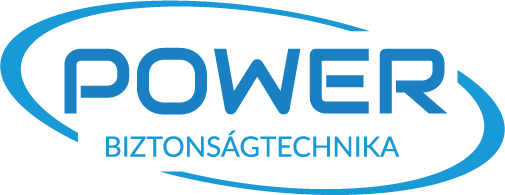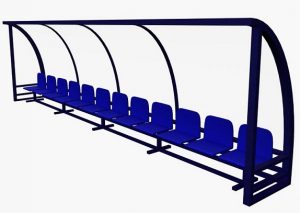
How to Build Exceptional RPA Solutions
Robotic Process Automation is with us for a while now, and too many organisations still struggle to discover how high-quality robots could be successfully implemented
“We want to spend more time on the important tasks.”
Robotic Process Automation (“RPA”) can provide an answer to many of the challenges that all companies face without exception.
Nowadays, almost all processes are carried out or supported by computers, but even so, most of the processes are not automated, let alone perfect. The execution of repetitive tasks and the correction of errors that occur during the execution of those tasks consumes considerable time.
Most companies find it difficult to define and sort their needs or don’t know what to expect from different technologies. Our experts can help you define your business requirements so that there will be no surprises when it comes to development.
If you don’t already have one, we’ll define it, if you do have one already, we’ll make it even better. In our experience, any business process can be improved by an additional 5-30%.
We lay the foundations for an effective automation programme: setting objectives, assessing and priorising opportunities, defining the automation methodology and process framework.
We design and implement a robust and easily scalable robot infrastructure. On either cloud, on-premises or hybrid basis.
We design, develop and deliver a tested robotic solution that meets your business requirements and takes over mundane, repetitive tasks, rather than generating them.
Until there is no data, enforceable execution rules and accountability in place, there is no process. By implementing a workflow system, a company can start to operate in a professional and transparent way.
Sometimes only a unique solution will fit a specific need, in order to deliver a tailor made solution we handle both the front- and back-end development.
For organisations living with large numbers of frequently changing systems, automated testing is a game changer, dramatically reducing the tasks and costs associated with testing.
We are happy to share our expertise and hard earned experience with anyone seriously interested in the RPA technology.
In addition to implementation, we provide the state-of-the-art software products required for successful automation.











When it comes to a previously unknown technology, we tend to think that it must be too complicated for us, it cannot fit into our organisation, or that it must be a “toy for the big boys”. The reality of RPA today, on the other hand, is that it can solve many of the operational challenges that most organisations face, most often in mundane areas such as invoicing…

Tasks that have to be done but do not create value on their own can be left to robots. This leaves the team more time for value added tasks, such as customer relationship development, product and service development, or sales.
In a three-step process, if the colleagues performing each step only make a mistake 20th runs, the final result will still be wrong 1 out of 7 times! A carefully designed robotic solution does everything right the first time, significantly reducing the need for rework!
Repetitive tasks can wear out even the most motivated and monotone-tolerant person, but this won’t happen with a “robot worker” – the tasks assigned to him will be performed with the same accuracy the first time and the 100,000th time.
Speedy execution might be considered valueable in itself – and increasingly so in today’s world. Robots can perform many times as fast as humans. By introducing robotised processes you can reduce waiting times, increase customer or even employee satisfaction!
Robots are available 24 hours a day, and can work almost continuously with the right organisation. The robot workforce can greatly improve business continuity, which is increasingly valued by both customers and business managers.
Robots are also good at managing operational change, because their capacity can be expanded dynamically and they can be quickly upgraded to comply with future tasks, as needed.










Robotic Process Automation is with us for a while now, and too many organisations still struggle to discover how high-quality robots could be successfully implemented

As I’ve already written a few key things about how to build RPA robots properly, it’d be just fair from me to write something about how

I like to get to know new people, who are dealing with RPA, and I like to generate RPA-related contents, and the reason for these
Software robots designed to automate processes do not have their own physical bodies, but they do use physical infrastructure (servers, desktop computers, ultimately even robots on demand from the cloud rely on physical resources). The easiest way to imagine them is as a “ghost in the machine”: clicking a button on the screen while the mouse is still. Their operation is illustrated in this case study video.
RPA robots take care of the accurate, consistent execution of rule-based processes. However, their capabilities are constantly evolving and they rely more and more on artificial intelligence and machine learning, for example in the areas of document processing, text interpretation and image recognition. By combining RPA and AI capabilities, technically the majority of an organisation’s processes can already be automated today.
Developing robots – like any profession – can be learnt, it’s just a question of how much time and energy you have to do so. We can develop robots ourselves for simple, step-by-step activities. For more complex, multi-system processes, where a variety of faults can occur and fail-safety is important, we recommend that you only develop a robot with the help of an expert.
The cost of robots is influenced by a number of factors, but overall it can be said that the annual cost of a robot is comparable to the total labour cost of an administrative staff member.
So what’s the big deal? The fact that robots can be trained to carry out any number of processes, at many times the speed of a human, and can work up to 24 hours a day – so they can deliver significant cost savings.
The development, testing and daily use of robots require a physical/virtualised infrastructure. The specific software used for robotisation typically determines resource requirements on a per-function basis: how powerful a server is needed to control and monitor the robots, what database is needed to store the logs of robot runs, how many developers can be served by the server used for robot development, etc.
The market-leading RPA software vendors are without exception able to provide the infrastructure required for each of these functions in a cloud deployment scenario. Depending on the client requirements, the infrastructure can be built in-house (on premise), partially on a cloud basis (hybrid cloud) or even fully in the cloud.
A robot capable of executing a specific process can be ready within a few weeks after the process and business needs have been captured. If, based on initial hands-on experience, the organisation wants to rely more heavily on robots (more complex processes, processing a larger number of transactions), we will definitely invest some time into building a sustainable, scalable infrastructure that may be up and running over a few weeks. An additional robot can be completed in weeks or months.
It would be nonsense to give a fixed saving amount without prior consultation, but we can say that with well-chosen target processes and a skilled development and maintenance team, robotisation projects can pay for themselves within a year (10 out of 10 finance managers would choose such a project, we believe :).
Beyond cost savings, it’s worth considering other ways robots can contribute to your success: error-free execution, faster customer service/information, better regulatory compliance, more efficient sales, increased employee satisfaction are just a few examples of the goals we are developing robots to achieve, beyond cost reduction.
Let’s not beat around the bush: robots can take over the vast majority of repetitive, rule-based manual tasks from humans. They already perform these tasks more cheaply than their human counterparts and the trend is clearly towards a further increase in their cost advantage. So what is the solution?
We believe that technology – and with it the economy – is constantly changing, and should an emerging technology bring a new industrial revolution with it, we are wise to try to exploit the opportunities it creates rather than to fight against inevitable change (which the machine-wrecking movement of the classic industrial revolution failed to do, by the way…).
We believe that the resources freed up by robots should be invested in customer service, business development, product and service development, operational improvement and generally in raising the quality of the service provided. We have yet to meet an organisation, that does not have a thousand plus one ideas lined up in the aforementioned improvement areas.
Working with robots inevitably involves organisational and operational change, with jobs being lost, transformed and new ones created. It is time for all business and human resource managers to pay due attention to this trend unfolding in front of our very eyes.